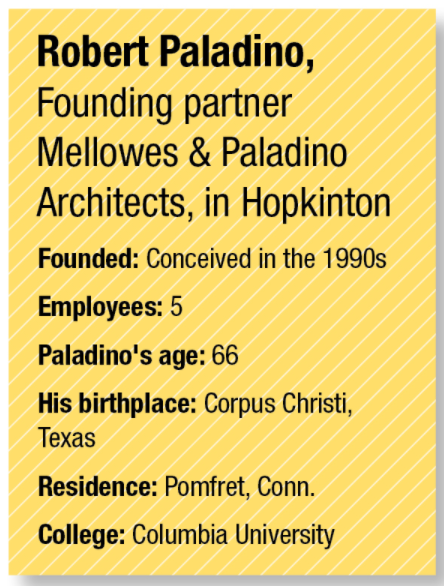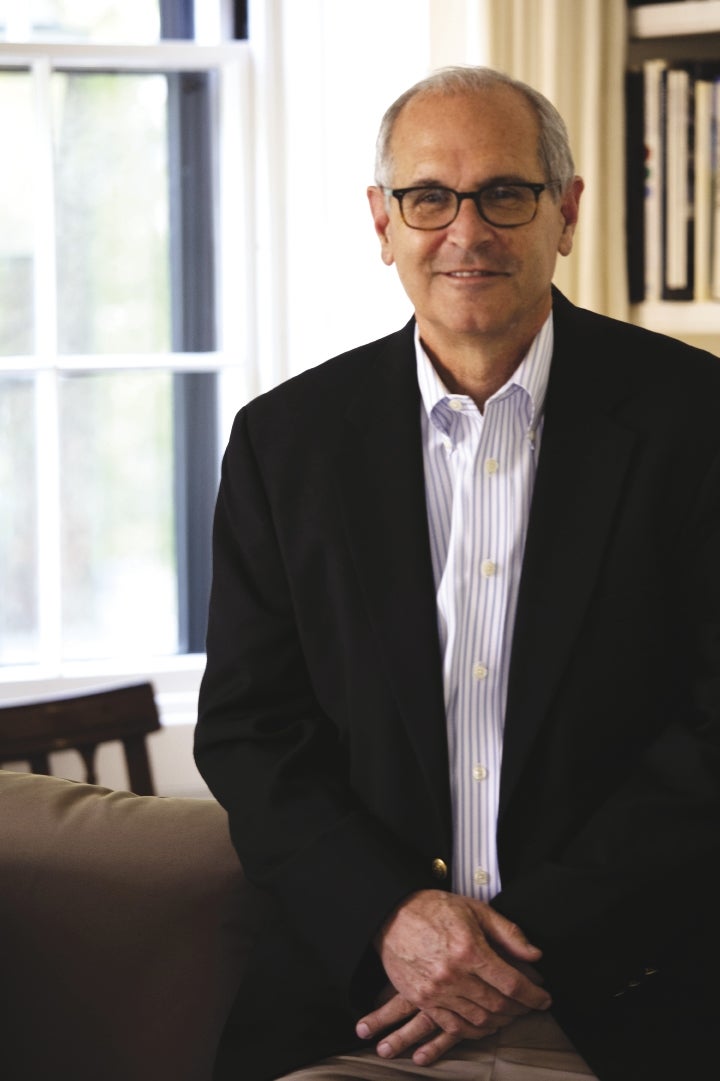In 2021, Boston Magazine named Mellowes & Paladino its top Traditional Architect. Although Robert Paladino’s work is informed by a traditional palette, he is known for taking an exploratory approach to arrive at innovative design solutions to residences.
Get Instant Access to This Article
Subscribe to Worcester Business Journal and get immediate access to all of our subscriber-only content and much more.
- Critical Central Massachusetts business news updated daily.
- Immediate access to all subscriber-only content on our website.
- Bi-weekly print or digital editions of our award-winning publication.
- Special bonus issues like the WBJ Book of Lists.
- Exclusive ticket prize draws for our in-person events.
Click here to purchase a paywall bypass link for this article.
In 2021, Boston Magazine named Mellowes & Paladino its top Traditional Architect. Although Robert Paladino's work is informed by a traditional palette, he is known for taking an exploratory approach to arrive at innovative design solutions to residences.

What was your route to architecture?
I started out with the intent of becoming a lawyer. I was an English major in college, and when I graduated, I decided to live in New York. I became a paralegal in a law firm; I was there for a year and decided I didn't like it. And so, I enrolled in a course at The New School for Social Research to explore my options.
After that, I decided to go back to Columbia for a fifth undergraduate year to study architecture. I took all the prerequisites I needed to apply to graduate school, and I got into graduate school. It was sort of a circuitous route to architecture. I went on to work in a very large firm. It was a great firm, but very corporate. I'm not really wired that way. I was more interested in smaller scale and residential projects.
I met my business partner there, Jim Mellows, and we both decided to take a leap to start our own firm. It was pretty risky at the time. We had a couple of clients who got us going. At a certain point, a client introduced us to all of his friends, and those people became our core clients. We were very lucky to have had that opportunity, and it has helped sustain us as a firm.
How did you end up in Central Massachusetts?
Our firm used to be located in downtown Boston, and I lived in the South End. My partner lived on Beacon Hill. When my family decided to sell our house in the South End, we relocated to our weekend house in Pomfret. We looked at a map, and Hopkinton was equidistant between Boston and Pomfret. That's how we decided to move our office to Hopkinton.
How do you pay respect to tradition and refinement while simultaneously implementing fresh and innovative designs?
I don't like to think of myself as a diehard traditionalist. I love modern architecture. We've developed a style with a traditional shell, but we introduce transitional or more contemporary elements within that shell. In other words, we try to insert contemporary details into the existing strength of a more traditional project. For example, bathroom fixtures are one way we can pull in something that's a little more contemporary. I like a nice juxtaposition.
We're known for being sort of spare in the way we detail things. By spare, I mean a clean traditional palette not overly ornate or fussy. People may argue with my use of the word spare, but that's how we strike balance as we're bringing in things from a wide spectrum of sources. I fall in love with every project. We really do immerse ourselves in this work.
Have you encountered any big challenges that turned into successes?
There are always challenges. We’ll meet with a client. We'll talk to them. They'll show us images. We get a sense of what they like. They come to us because they like our work in the first place, so we start off knowing that as we come up with a schematic design and present it to them. It usually goes well, but there are times when they say, “Why don’t we do this? Or why don’t we do that?” They make suggestions. It's always a little painful to hear, because you buy into every project and feel proud of the thing you've designed.
After receiving feedback, you have to go back to the drawing board and rework the design. It always comes out better. It’s really interesting. Input from external sources – the client, the builder, the other people in the office – always results in a much more refined project.
What’s in store for the future?
Well, I'm getting old, but I love my job and my work. What I’d like to do is leave a legacy for the firm, to continue after I'm gone. There aren't any specific plans for me to leave at the moment, but I know I’d like to see the people here continue working for Mellowes & Paladino when the time comes.
I enjoy the design aspect more than anything else. I would love to continue having a hand in the design emanating from this firm. If I could somehow pop in and out to keep participating in design, it would be a wonderful future for me.
This interview was conducted and edited for length clarity by WBJ correspondent Sarah Connell Sanders.

